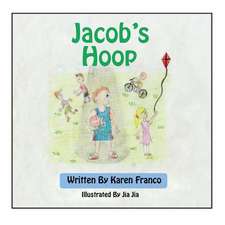Can I Tell You about Cerebral Palsy?: A Guide for Friends, Family and Professionals: Can I Tell You About...?
Autor Marion Stanton Ilustrat de Katie Stantonen Limba Engleză Paperback – 20 ian 2014 – vârsta de la 8 până la 12 ani
Din seria Can I Tell You About...?
- 5%
 Preț: 67.96 lei
Preț: 67.96 lei - 18%
 Preț: 72.61 lei
Preț: 72.61 lei - 18%
 Preț: 72.33 lei
Preț: 72.33 lei - 18%
 Preț: 72.24 lei
Preț: 72.24 lei - 18%
 Preț: 72.61 lei
Preț: 72.61 lei - 18%
 Preț: 72.87 lei
Preț: 72.87 lei - 18%
 Preț: 72.33 lei
Preț: 72.33 lei - 18%
 Preț: 72.96 lei
Preț: 72.96 lei - 18%
 Preț: 72.68 lei
Preț: 72.68 lei - 18%
 Preț: 72.24 lei
Preț: 72.24 lei - 18%
 Preț: 72.61 lei
Preț: 72.61 lei - 18%
 Preț: 72.68 lei
Preț: 72.68 lei - 18%
 Preț: 73.14 lei
Preț: 73.14 lei - 18%
 Preț: 72.68 lei
Preț: 72.68 lei - 18%
 Preț: 73.05 lei
Preț: 73.05 lei - 18%
 Preț: 73.49 lei
Preț: 73.49 lei - 18%
 Preț: 72.68 lei
Preț: 72.68 lei - 18%
 Preț: 72.24 lei
Preț: 72.24 lei - 18%
 Preț: 72.68 lei
Preț: 72.68 lei - 22%
 Preț: 69.49 lei
Preț: 69.49 lei - 19%
 Preț: 70.91 lei
Preț: 70.91 lei - 19%
 Preț: 71.80 lei
Preț: 71.80 lei - 15%
 Preț: 78.48 lei
Preț: 78.48 lei - 19%
 Preț: 70.91 lei
Preț: 70.91 lei - 22%
 Preț: 68.63 lei
Preț: 68.63 lei
Preț: 72.96 lei
Preț vechi: 88.79 lei
-18% Nou
Puncte Express: 109
Preț estimativ în valută:
13.96€ • 14.49$ • 11.67£
13.96€ • 14.49$ • 11.67£
Carte disponibilă
Livrare economică 24 februarie-10 martie
Livrare express 07-13 februarie pentru 31.99 lei
Preluare comenzi: 021 569.72.76
Specificații
ISBN-13: 9781849054645
ISBN-10: 1849054649
Pagini: 62
Dimensiuni: 155 x 228 x 6 mm
Greutate: 0.15 kg
Editura: Jessica Kingsley Publishers Ltd
Seria Can I Tell You About...?
ISBN-10: 1849054649
Pagini: 62
Dimensiuni: 155 x 228 x 6 mm
Greutate: 0.15 kg
Editura: Jessica Kingsley Publishers Ltd
Seria Can I Tell You About...?
Notă biografică
Marion Stanton is a special needs teacher, AAC (Augmentative and Alternative Communication) practitioner, and mother of three children including Dan who has cerebral palsy. She has co-founded a parent-run early learning group for children with disabilities (PALACE) and has been an active member of the Alliance for Inclusive Education. She is currently lead assessor and trainer for Communication and Learning Enterprises Limited (CandLE), a non-profit organisation that supports young people with communication difficulties. Marion is the author of Understanding Cerebral Palsy, also published by Jessica Kingsley Publishers. She lives in Cumbria, UK.
Cuprins
Acknowledgements. 1. Introducing Sophie who has Cerebral Palsy. 2. Using alternative communication. 3. Personal assistants and having fun. 4. Disability rights. 5. Communication at school. 6. What is Cerebral Palsy?. 7. Other difficulties. 8. Management and support. 9. Opportunities. 10. The future. 11. Disability in the community. 12. Communication passport and other communication help. 13. How teachers can help. 14. How teaching assistants can help. 15. How family can help. 16. How personal assistants and other carers can help. 17. How others in the community can help. 18. How professionals and therapists can help. Recommended websites and organisations.



















